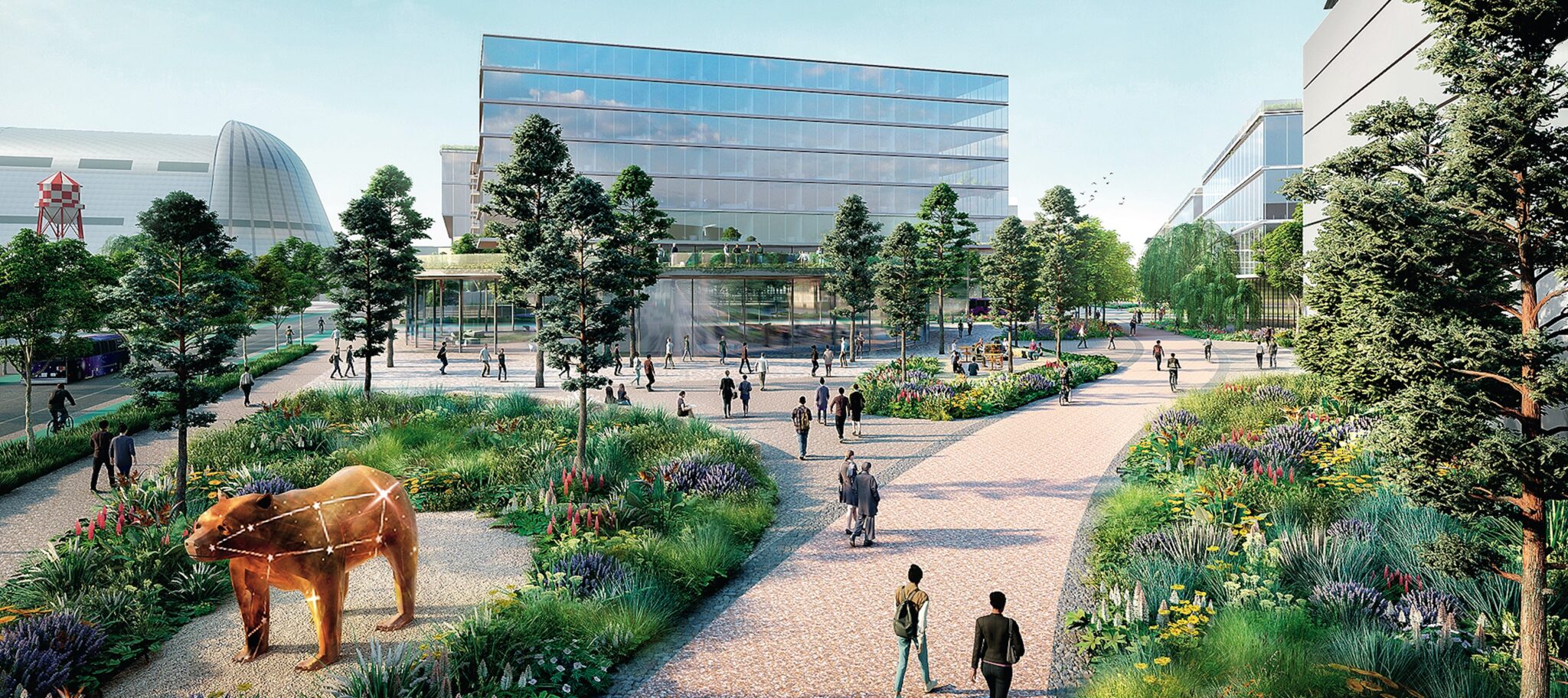The timing of this issue’s focus on creativity is serendipitous, if only because we have recently been reminded that creativity comes in packages large and small. As it happens, our university’s latest imaginative endeavor is quite large.
I am referring to our recent announcement of a new joint venture that is slated to build a 36-acre research and innovation hub at NASA Ames. Located at Moffett Field, in the heart of Silicon Valley, it will be called “Berkeley Space Center.” This unprecedented project is the culmination of many years of extensive planning, negotiation, and, yes, creativity that follows our long tradition of challenging the status quo. It will expand the Bay Area’s innovation ecosystem, catalyzing advancements across diverse sectors, including aeronautics, quantum computing, climate studies, and the social sciences.
The joint venture is a partnership between the university and SKS Partners, a leading commercial real estate firm known for developing innovative, sustainable properties in the Bay Area. The mixed-use development’s proposed master plan features at least 1.4 million square feet of office and R&D space, including wet and dry labs, as well as conference space, academic facilities, and housing.
This planned expansion of Berkeley’s physical footprint and academic reach represents a fantastic opportunity for our students, faculty, staff, and the public we serve. At its heart, the Berkeley Space Center is a resounding vote of confidence in the power and purpose of academic research and education; in California’s and the Bay Area’s enduring spirit of creativity and entrepreneurship; and in the societal benefits that can be achieved when the academy, government, and private sector join forces. Together, we will speed the translation of discoveries across a wide range of disciplines into inventions, technologies, and services that will advance the greater good.
While we anticipate that the first buildings will not open for another four years, the campus is already expanding its collaboration with NASA at the site and on our campus. This includes new research grants, collaboration on research projects, research internships, and joint symposia, as well as classes that will be taught at Berkeley by NASA staff. Down the road, there will be more, much more. Research will take place into all that is necessary to support sustained life in space. Discoveries will be made in the realms of new air mobility technology, remote sensing, and data science. The list of opportunities goes on, up to and including the possibility of a Silicon Valley version of junior year abroad for undergraduates.
To top it all off, Berkeley is slated to receive a portion of the revenues the real estate development is projected to generate. All told, the university estimates it will receive annual revenues of at least $40 million from multiple project-related sources.
We were thrilled and honored that Nobel laureate and Professor Saul Perlmutter joined our announcement event and aptly captured the essence and importance of the Berkeley Space Center: “Aeronautics and aerospace, space sciences, and cosmology are some of the emblematic fields of collaborative achievement—they need collaboration, people who come from all over to work together, sharing expertise and ideas. What can humans do when they come together to solve problems, rather than struggling with each other? They can fly, they can go to the moon, they can begin to decipher a Big Bang universe. So, my hope for the Berkeley Space Center is that it gets to play a role in teaching a next generation to work together to solve big problems—with the aspiration towards the amazing world we now know we can live in where all are cared for and all can thrive.”
It should come as no surprise that two of the key players in this are creative Cal alumni. Former CAA President Darek DeFreece ’93 is the founder and executive director of the Berkeley Space Center project, and Dr. Eugene Tu ’88 is the director of the NASA Ames Research Center. In fact, we would love to hear from alumni who are in aerospace and aviation. Project and contact information can be found at spacecenter.berkeley.edu.
And, yes, OK, I will admit that it adds a little something extra to know we are bringing a second world-class university to this neighborhood across the bay—a little blue and gold to add to the red that has long dominated there. May the Golden Bears thrive in their new home away from home in Silicon Valley.


















